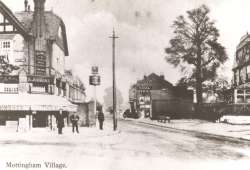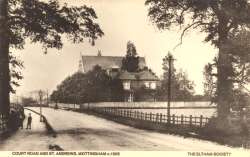History of Mottingham
Historically Mottingham was an extra parochial district attached to Eltham, the name being first recorded in 862AD as Modingahema meaning the land of Moda’s people, sometime interpreted as “the proud place”.
In historic times the main settlement lay along what is now Mottingham Lane, where large houses such as Fairy Hall and Mottingham House could be found. The rest of the district was farmland.
The arrival of the railway at what was initially called Eltham station in 1866 (later renamed Mottingham) was the first spur to development and small cottage style houses began to spread along what is now Mottingham Road, the first shops appearing at “The Terrace” in the 1860’s. More upmarket houses began to appear in the 1880’s when West Park was laid out. These houses have proved very successful and are still popular today.
St. Andrew’s, Mottingham’s first church opened in 1880 in the fields between the station and the village. It was not until after the First World War that this area lost its rural nature, primarily the result of the opening of the Sidcup Arterial Road in 1923, which improved road journey times to London and became a catalyst for ribbon development.
At the beginning of the 1930’s the London County Council bought the Court Farm estate and began the building of the 2000 home Mottingham Estate; the first houses were occupied in 1935. The estate was fairly self-contained with a sizeable shopping centre and several schools.
After the war Woolwich Council began the Coldharbour estate to the east of Mottingham Road. Built on the last remaining farmland in the L.C.C. area, it was created primarily to provide accommodation for local people made homeless by the blitz.
More recent developments have been limited to small scale housing on brown field sites replacing schools, pubs and businesses.








